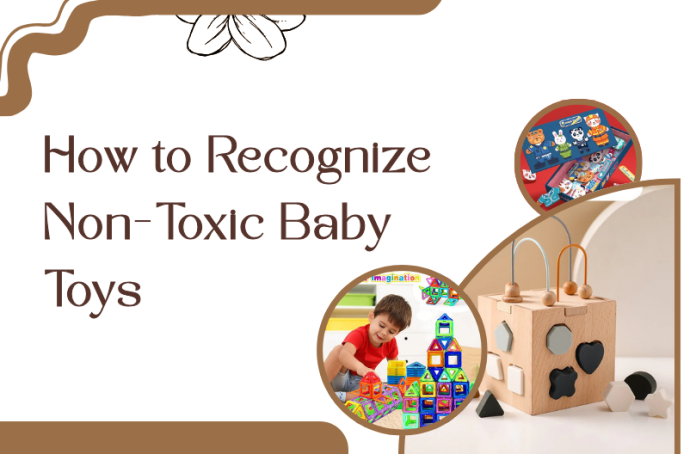Every parent wants the best for their child, especially when it comes to playtime. Babies explore the world through touch, taste, and sight, which means the toys they interact with need to be safe.
Why Choosing Non-Toxic Toys Matters?
Non-toxic toys are designed to protect children from harmful chemicals while encouraging healthy development. Choosing wisely now can save you from potential health risks later, giving you peace of mind as your little one plays, learns, and grows.
Understanding Non-Toxic Toys
What “Non-Toxic” Really Means
A non-toxic toy is one that doesn’t contain chemicals or materials known to be harmful if ingested, inhaled, or absorbed through the skin. While “non-toxic” may sound straightforward, it’s important to remember that not all toys labelled this way are entirely free from risk. Always double-check materials and certification labels before buying.
Common Harmful Chemicals to Avoid
Some of the chemicals commonly found in conventional toys can be harmful to children. These include BPA, phthalates, lead, and PVC. Even small amounts of these substances can cause issues with development, hormone balance, and overall health. Being aware of these risks helps you make smarter choices at the toy store.
Materials to Look For and Avoid
Safe Materials: Wood, Silicone, Organic Fabrics
Wooden toys, especially those made from sustainably sourced timber, are often the safest option. Silicone and natural rubber are also excellent choices, as they are durable and chemical-free. Organic fabrics are great for plush toys, reducing the risk of exposure to pesticides or synthetic dyes.
Materials to Avoid: BPA, Phthalates, PVC
Plastics that contain BPA or phthalates should be avoided, as these chemicals can affect hormonal development. PVC plastics are another culprit, often containing lead or other heavy metals. When in doubt, look for toys made from natural, chemical-free materials.
Choosing Toys for Safety and Durability
When selecting toys, materials and construction matter just as much as appearance. Opt for toys that are sturdy, well-finished, and free from small detachable parts that could pose a choking hazard. Durable toys not only last longer but also remain safe through repeated play. Pay attention to smooth edges, non-toxic paints, and secure fittings. Simple designs often prove safer than overly complex toys with numerous small parts. By prioritising quality and durability, you ensure your child has fun while staying protected from potential hazards.
Practical Tips for Choosing Safe Toys
Selecting age-appropriate toys is key to safety and proper development. Small parts can be a choking hazard, so always check the recommended age range on the packaging. Even a non-toxic toy can be unsafe if it has loose parts or rough edges, so inspecting toys carefully before buying is important.
Handmade or DIY toys can also be a wonderful alternative. They allow you to control materials and craftsmanship, ensuring safer play. Using non-toxic paints, natural fabrics, and safe adhesives can transform simple materials into toys that are both fun and secure. Second-hand toys can also be a viable option, provided they are washed thoroughly and inspected for cracks, chips, or worn surfaces that could pose risks.
When it comes to wooden toys, not all are automatically safe. Some may be treated with toxic paints or finishes, so it’s always best to choose natural, untreated wood or water-based, non-toxic coatings. Similarly, the colours used in toys can affect safety. Non-toxic toys use natural dyes or water-based paints, while conventional toys may contain harmful chemicals. Checking the manufacturer’s information ensures that the toys you bring home are genuinely safe.
Cleaning and Maintaining Non-Toxic Toys
Non-toxic toys require regular cleaning to stay hygienic. Mild soap and warm water are usually enough, avoiding harsh chemical cleaners that could compromise the toy’s safety. Proper maintenance also extends toy life. Wooden toys may benefit from occasional natural oiling, while silicone toys last longer when stored in cool, dry places. Keeping toys in good condition ensures that your child can enjoy them safely for years.
Conclusion – Making Confident Choices for Your Child
Choosing non-toxic toys doesn’t have to be complicated. Focus on safe materials, reliable certifications, and careful inspection. Trust your instincts and take the time to research products, because your child’s health and happiness are worth the extra effort.

